Small wild-caught fish
Discus cichlids, like all cichlids, only develop their full coloration when they are largely mature (i.e. approx. 15 cm long in the case of discus). This is generally known and one of the reasons for the popularity of Asian color breeds, as they already show their full color at lengths of 7-9 cm. But wild-caught specimens of this size are also very attractive! We are proving this with a small series in which we show wild forms that we currently have in stock from Brazil.
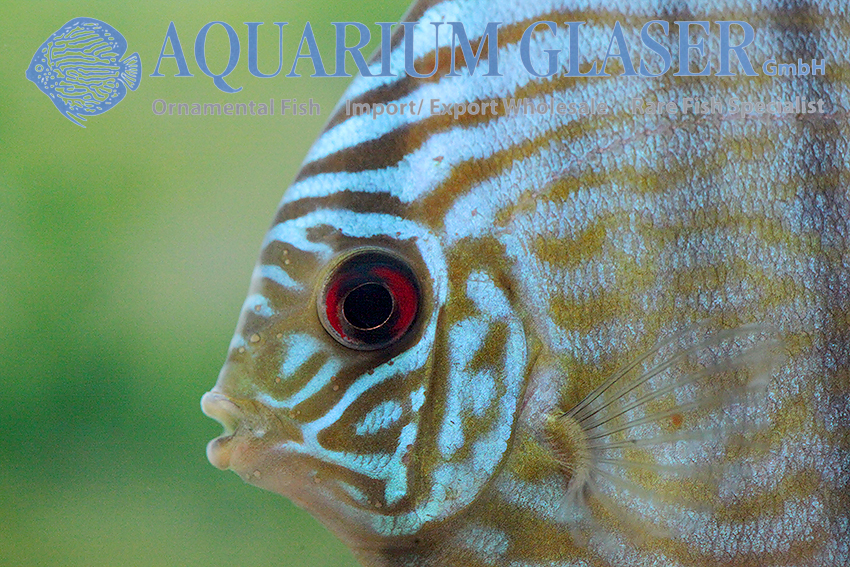
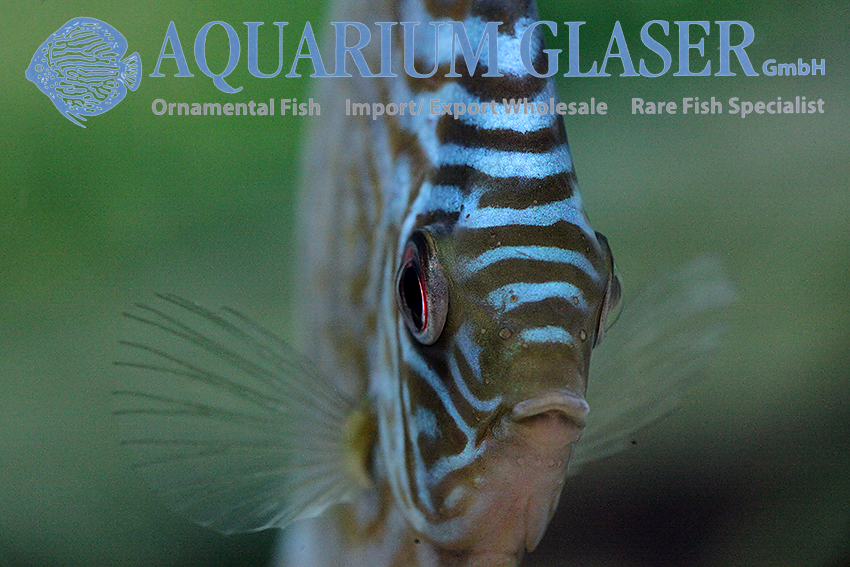
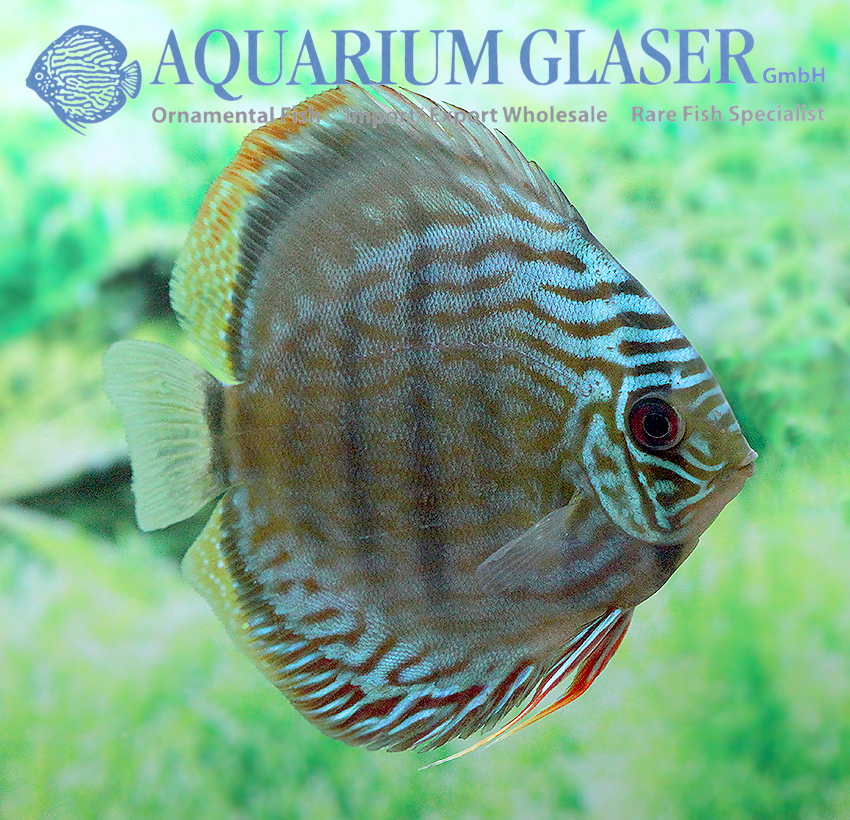
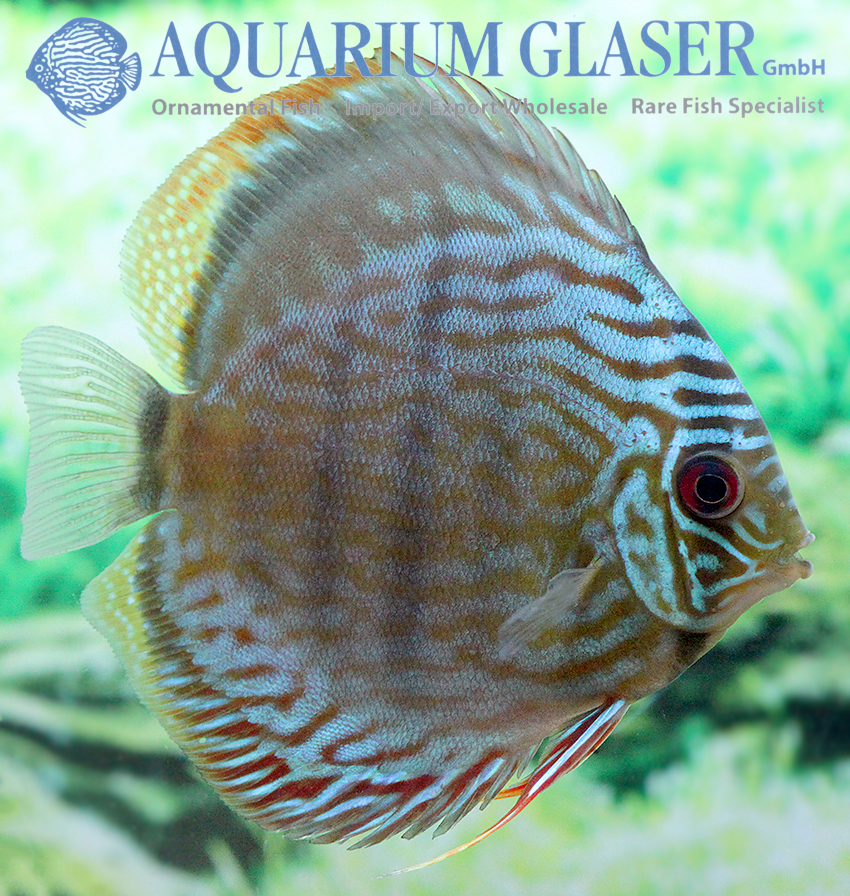
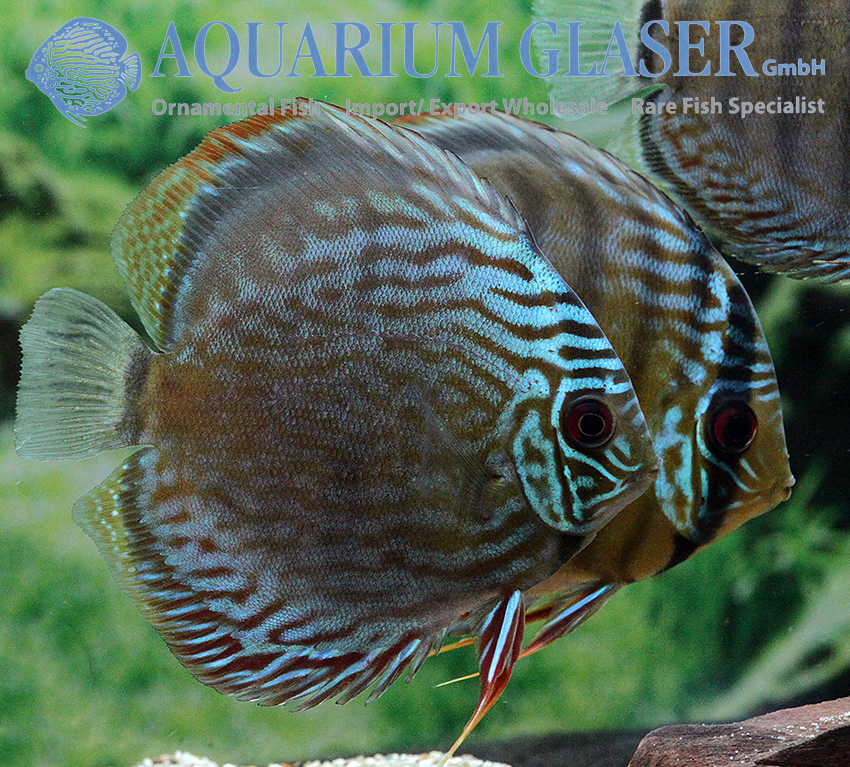
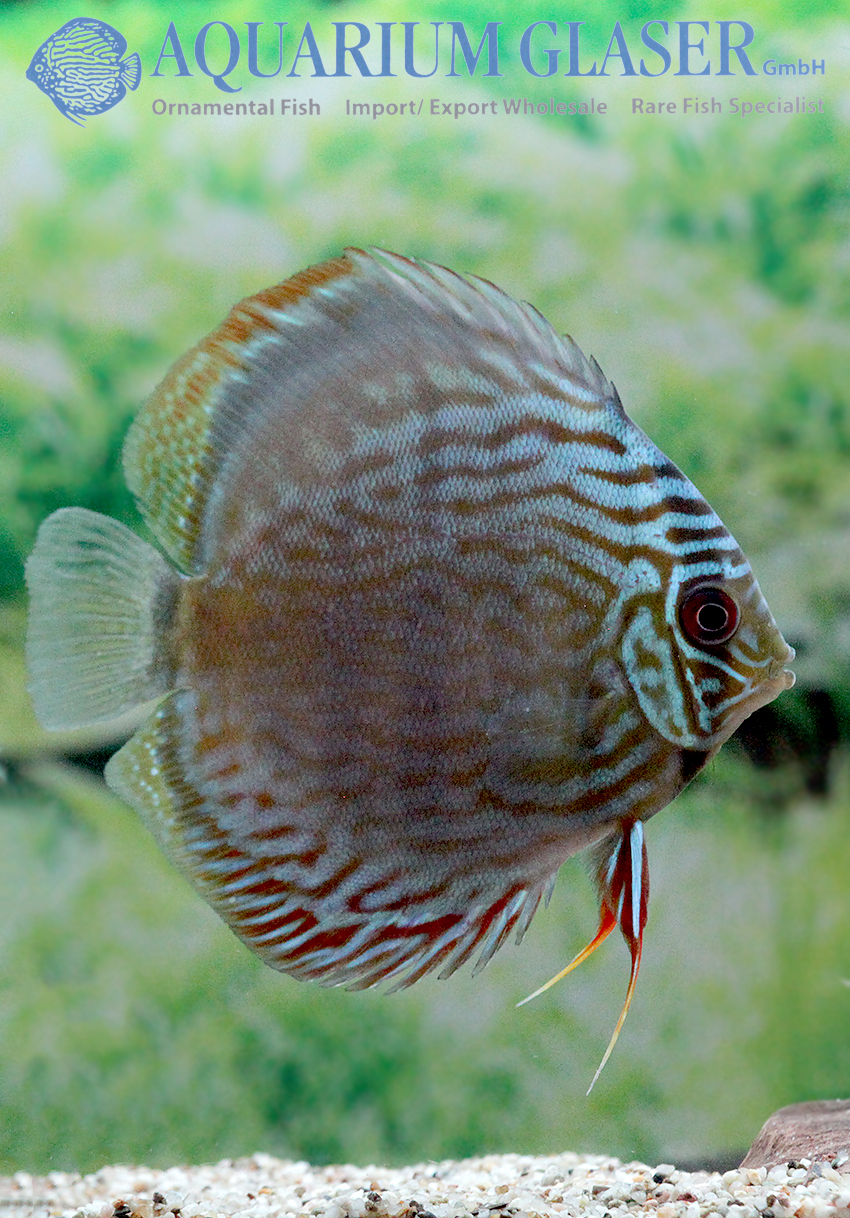
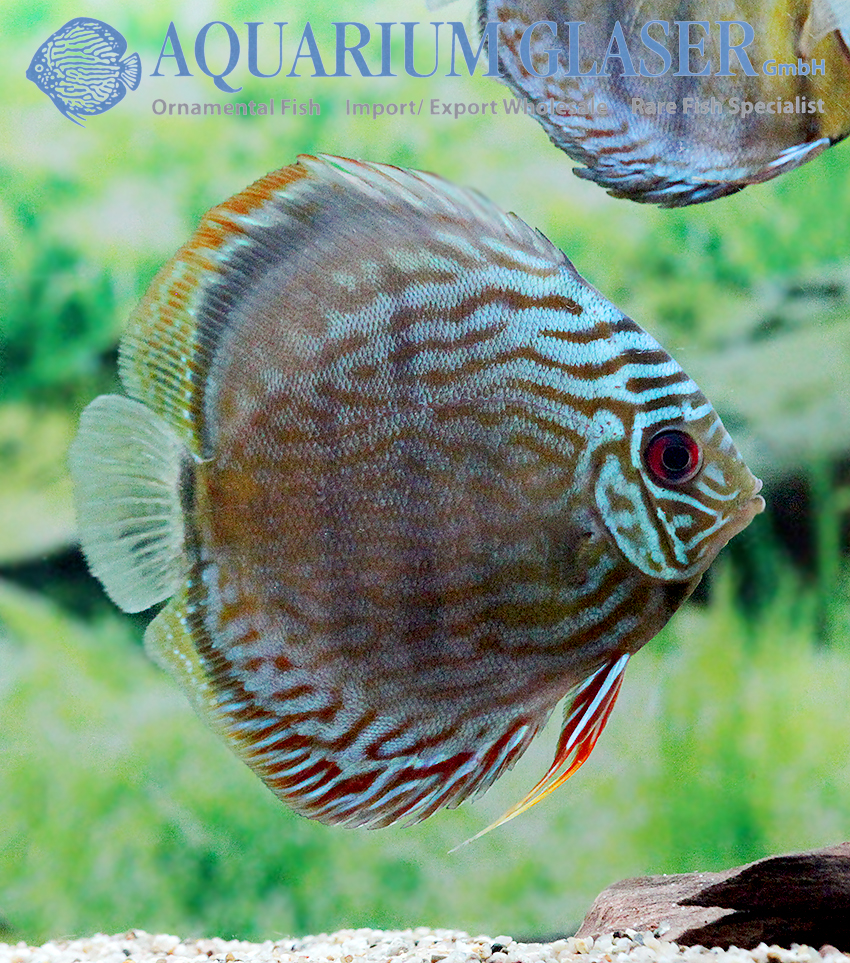
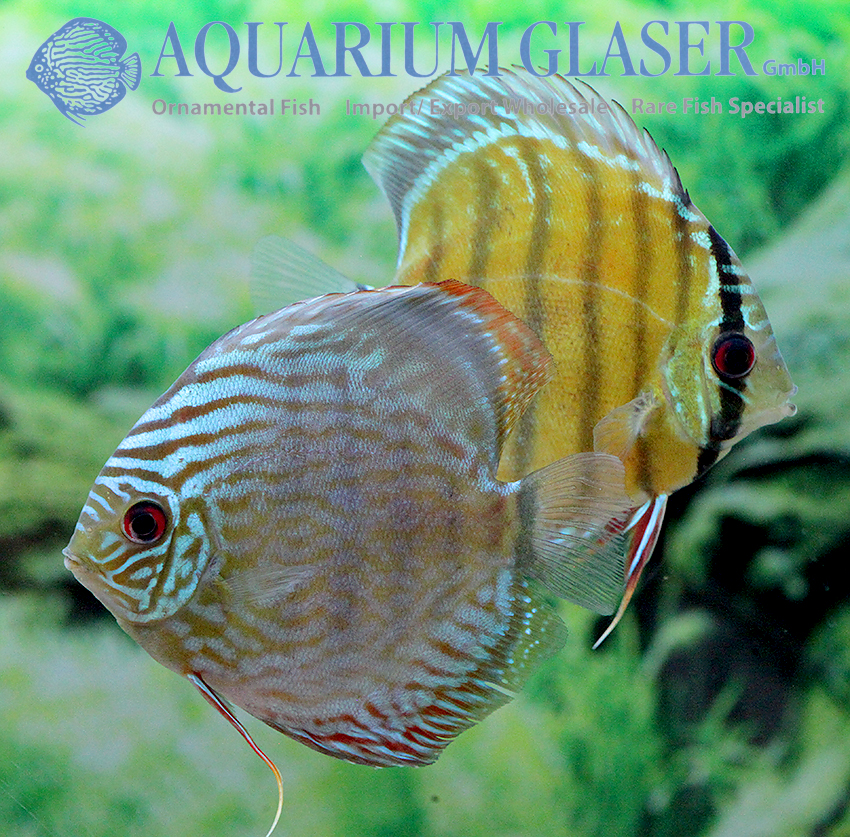
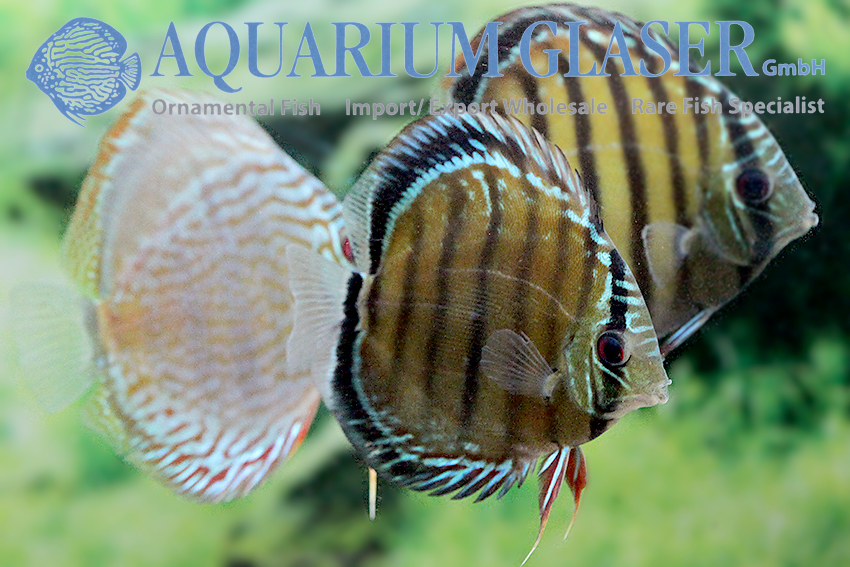
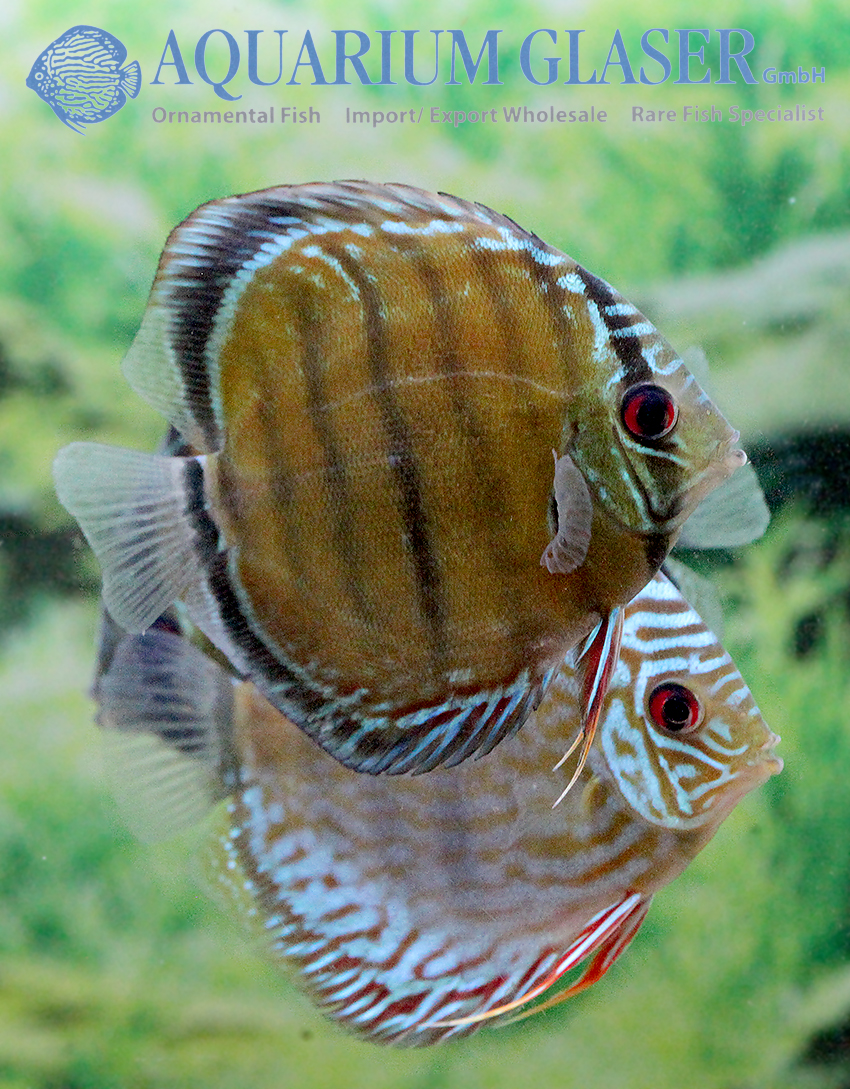
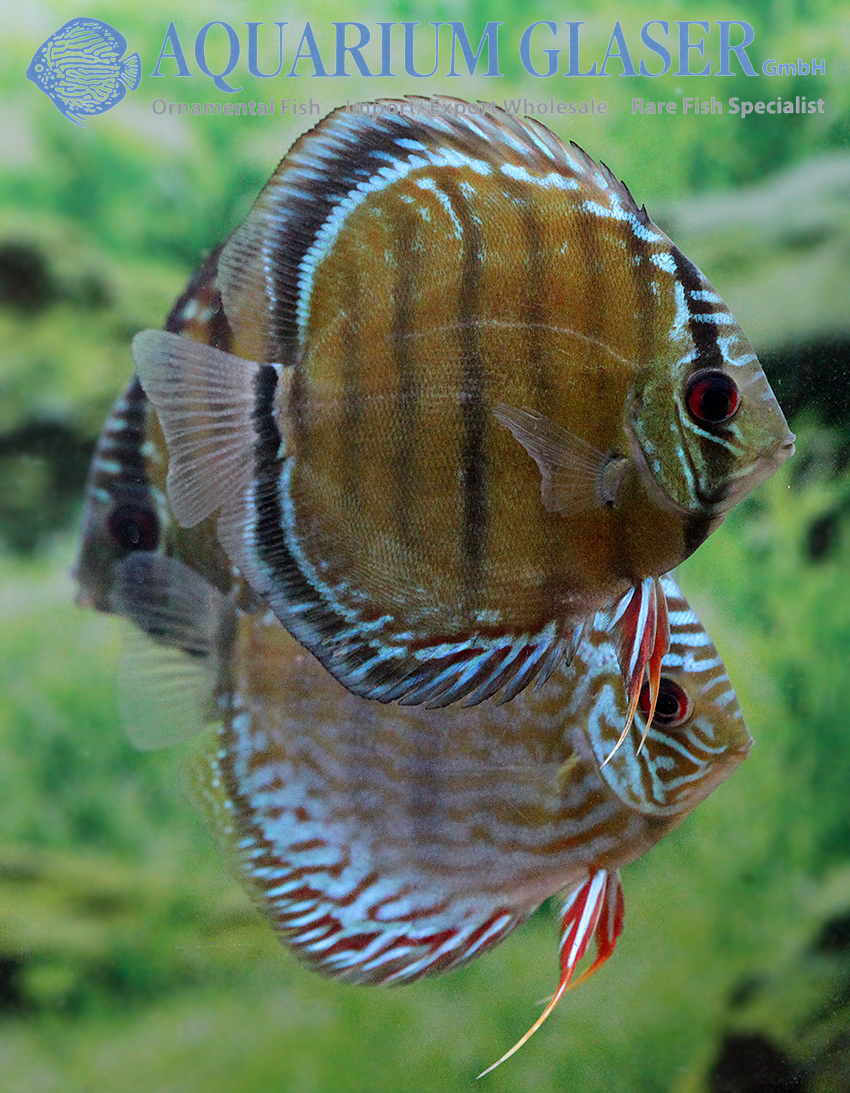
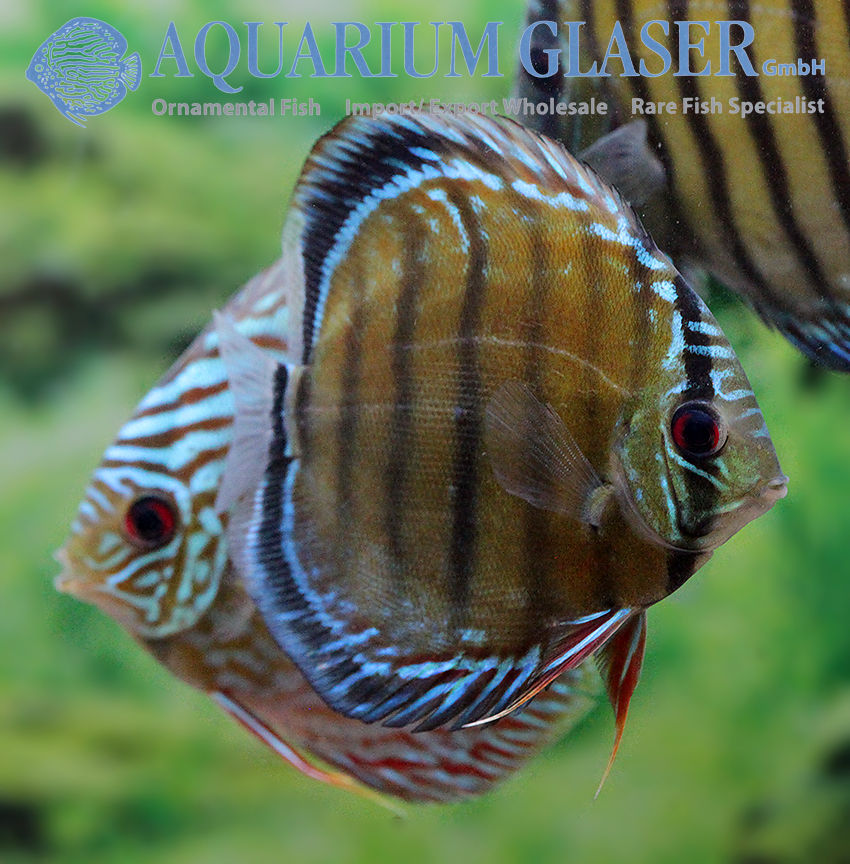
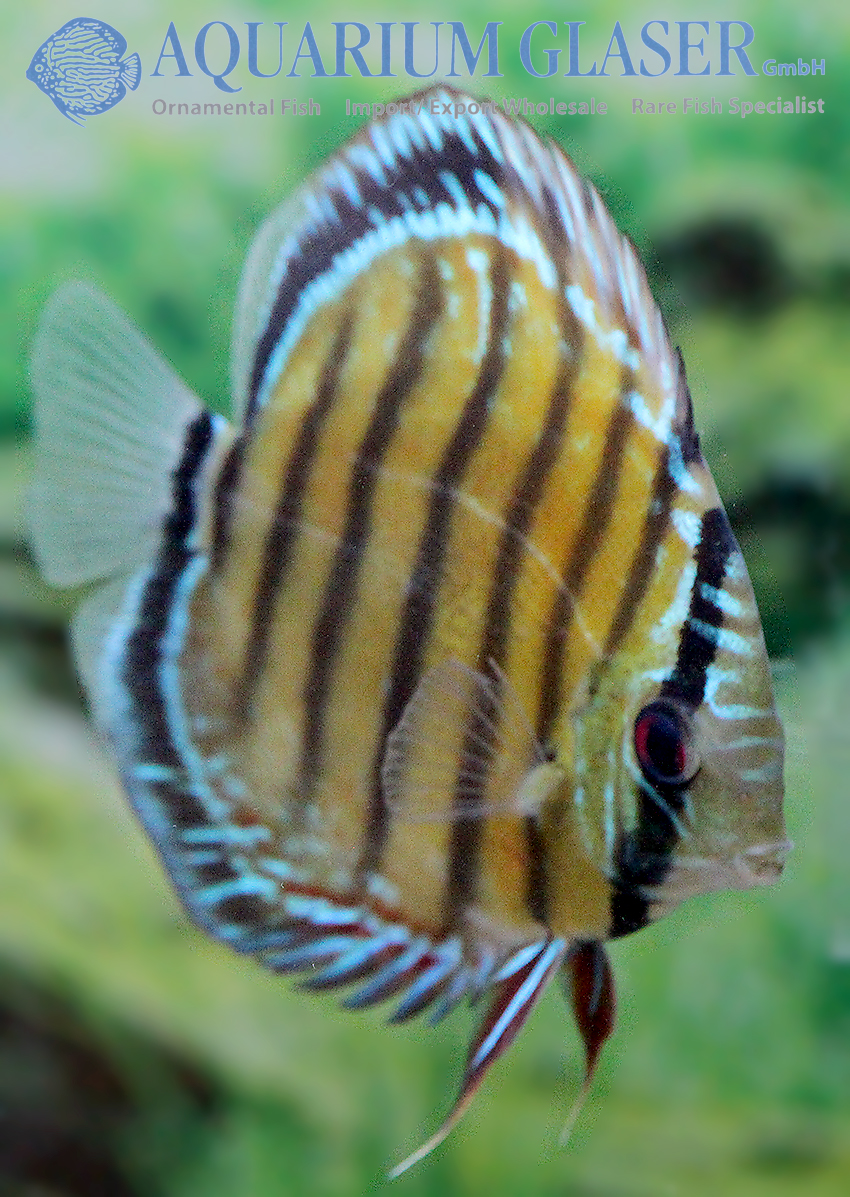
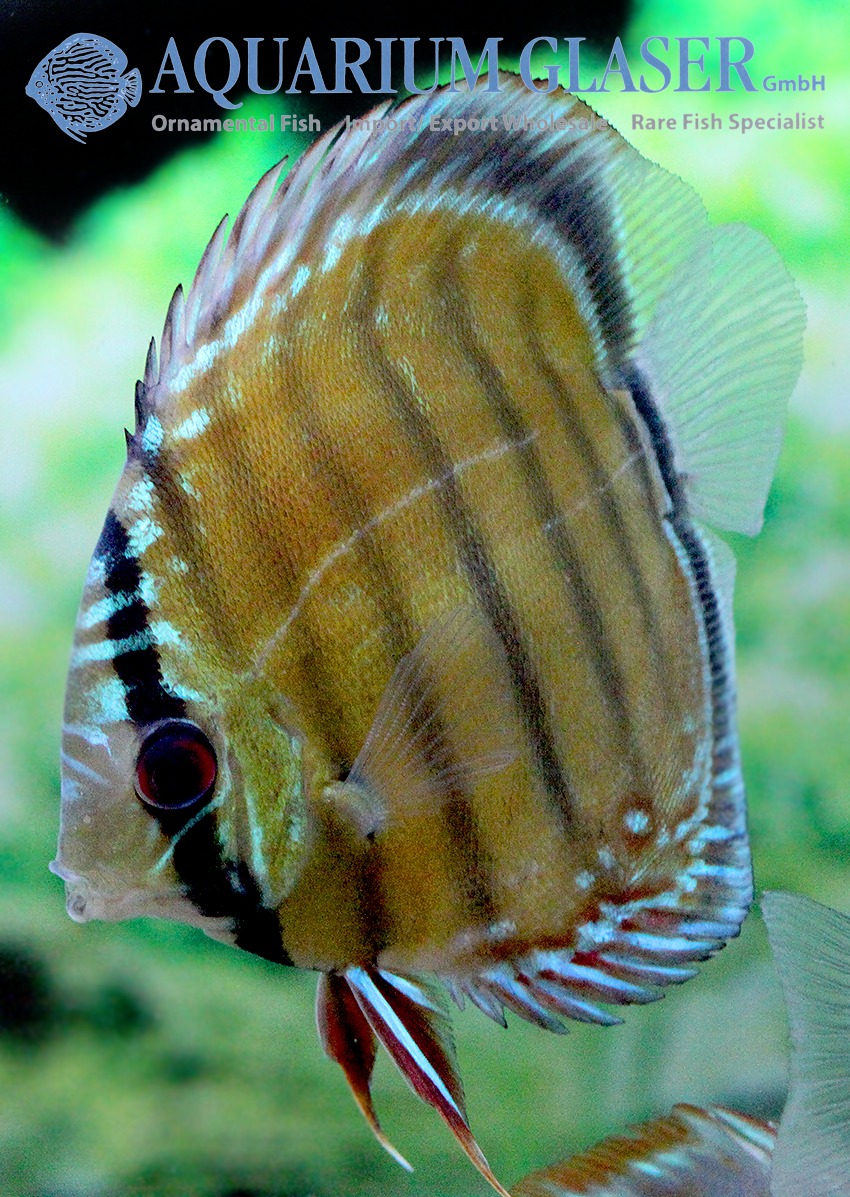
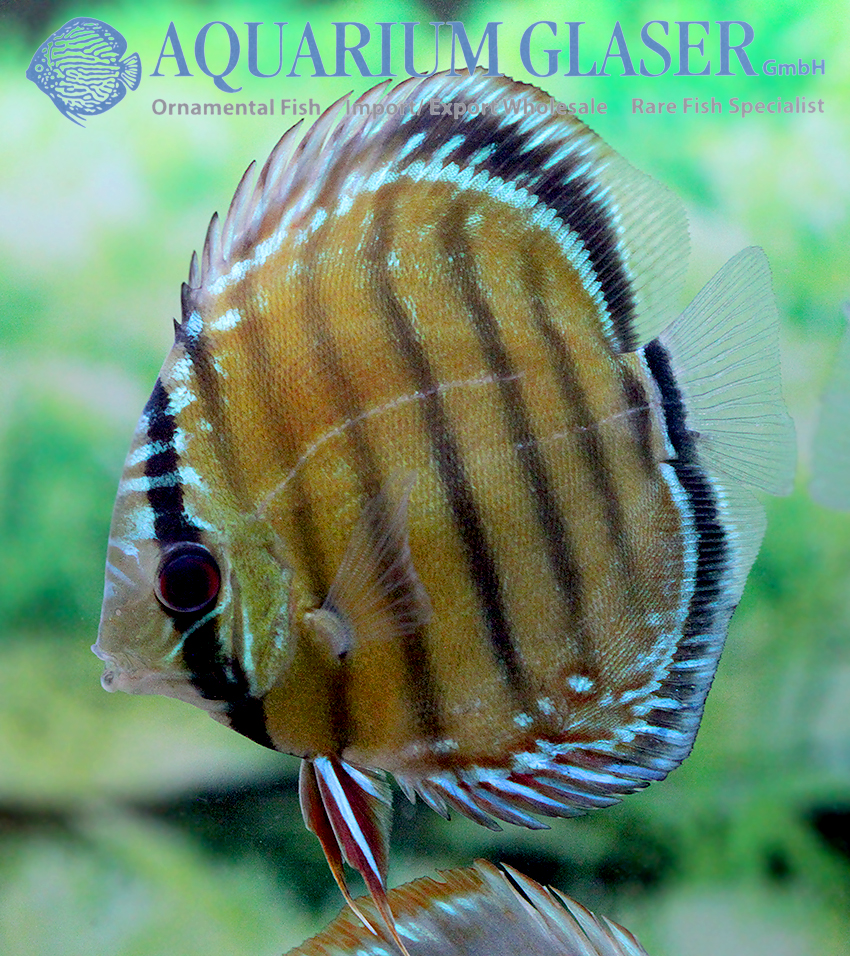
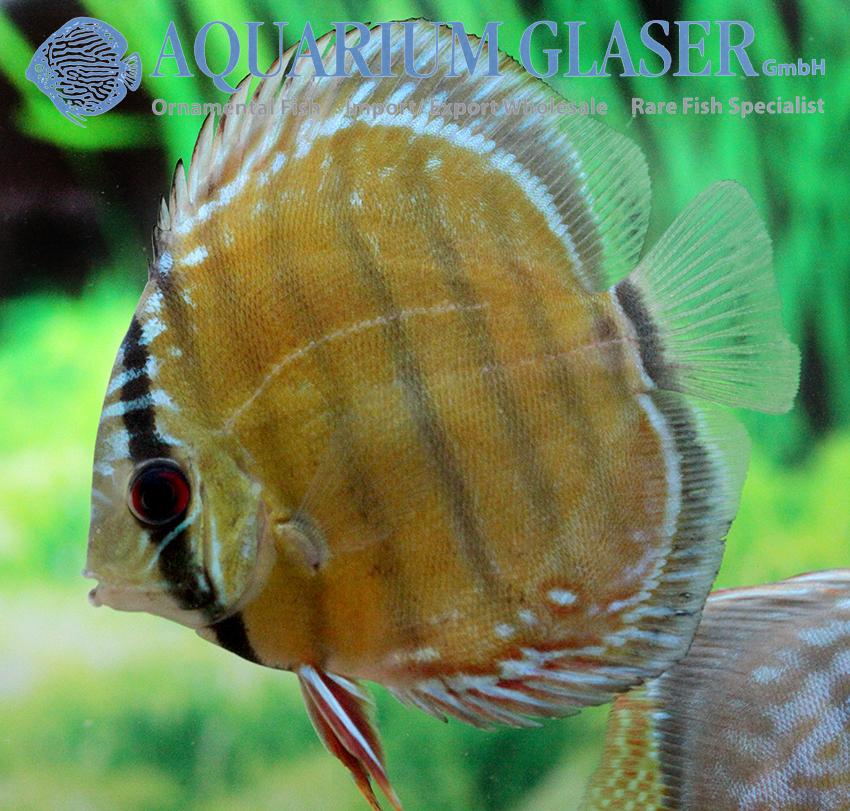
Discus Blue Nhamunda 7-9 cm
This variant is individually and often sexually very variably colored. The male in our session is a Royal Blue animal. This is the name given to blue discus that are striped from head to tail over the entire height of the body. Males can be easily recognized by their long ventral fins once they reach sexual maturity. However, the reverse conclusion, i.e. short pelvic fins = female, is not possible. As with all cichlids, there are males that disguise themselves as females and thus gain access to the spawning activities of a pair. This behavior is called “sneaker” behavior. It is widespread in the animal kingdom and is, so to speak, genetic parasitism.
The females of this discus Nahmunda are – technically speaking – brown discus. The difference between brown and blue discus lies only in the proportion of blue coloration, which is why the old division of these two discus forms into blue and brown fish is now only used in the trade and the scientific subspecies names used in the past are seen as synonyms for each other.
For our customers: these animals have code 731303 on our stocklist. Please note that we only supply the wholesale trade.
For the scientific name of discus fish, please read here: https://www.aquariumglaser.de/en/fisharchive/the-scientific-species-name-of-discus-cichlids-an-open-question/
Text & photos: Frank Schäfer




